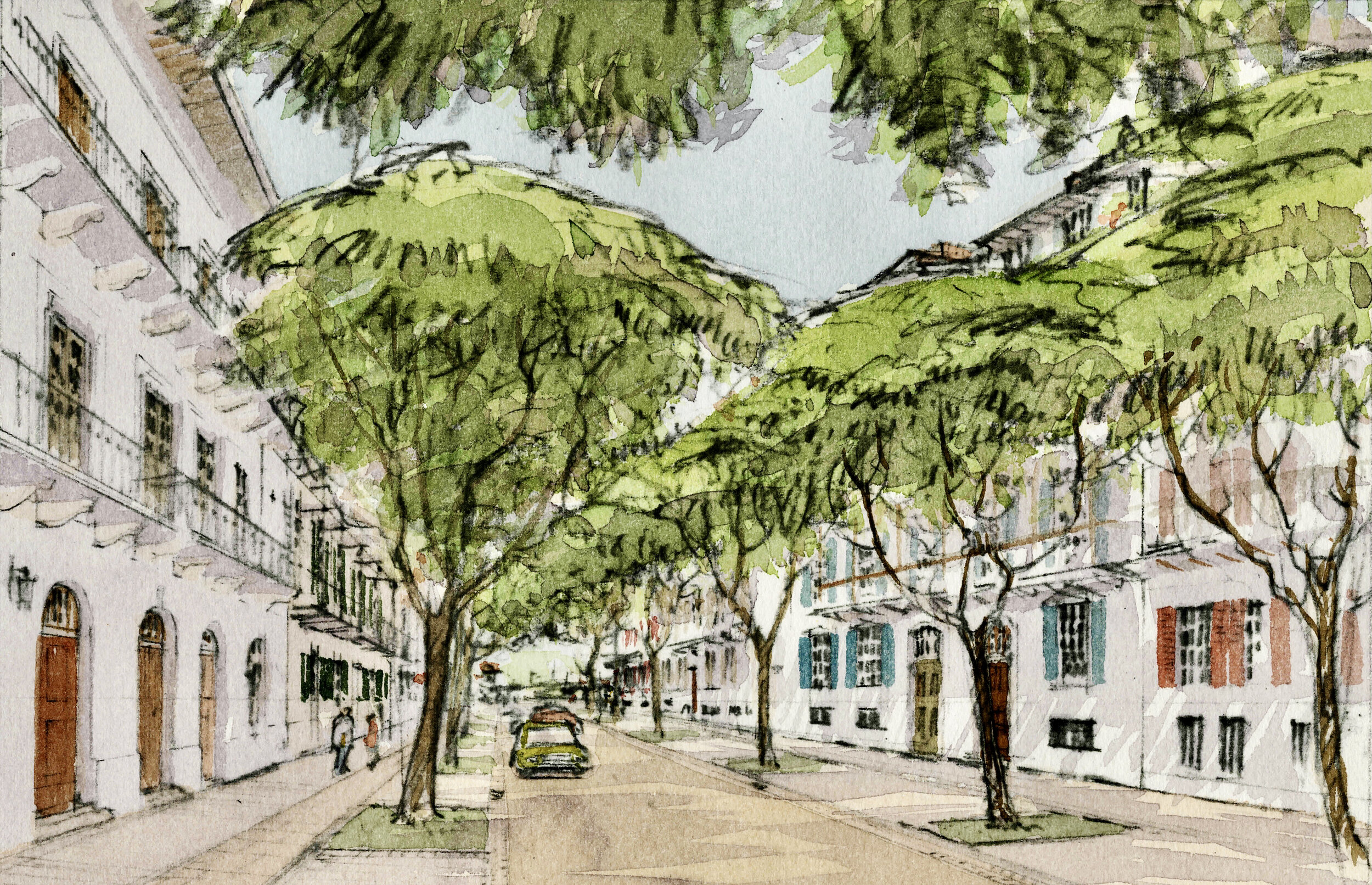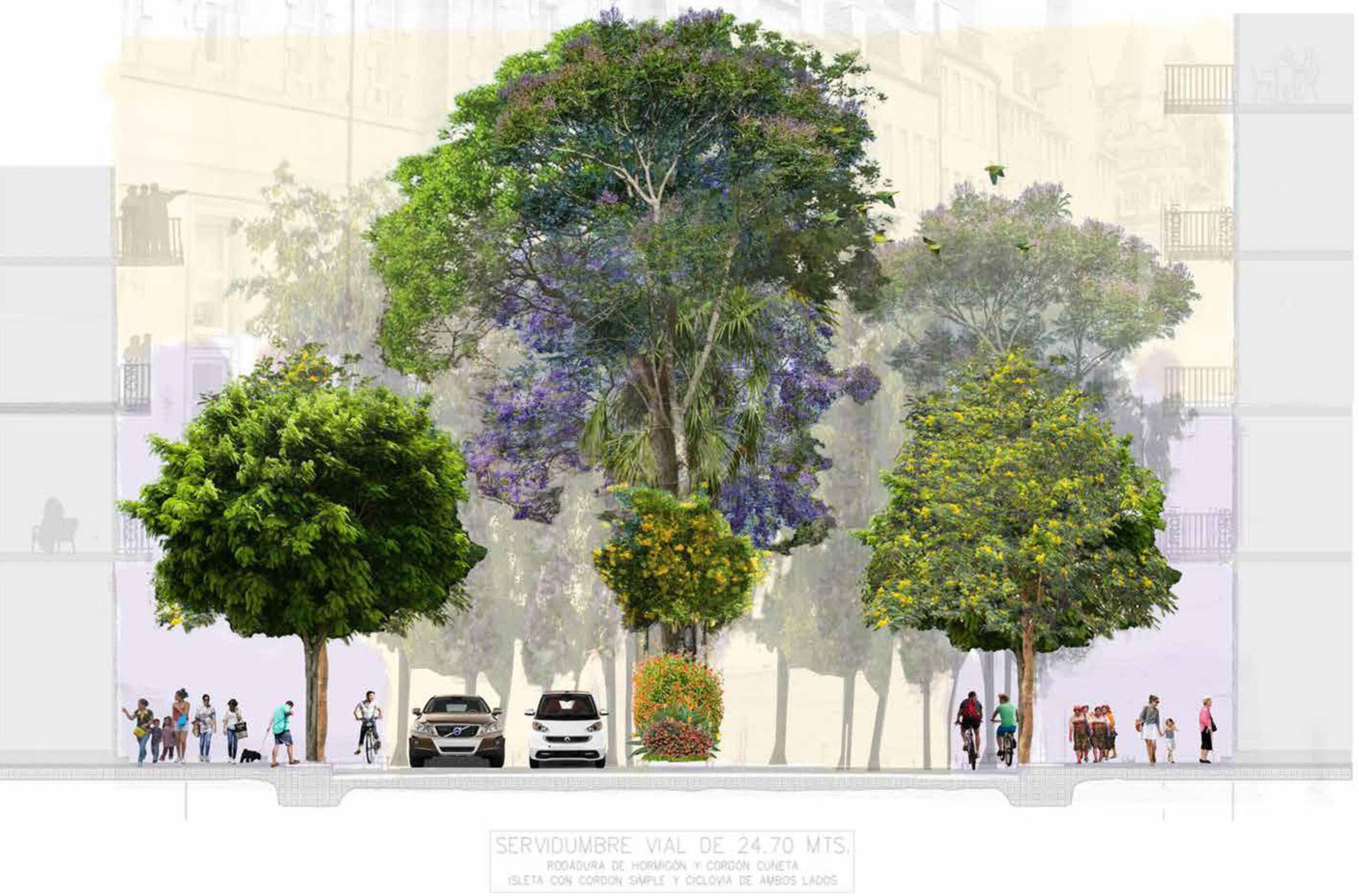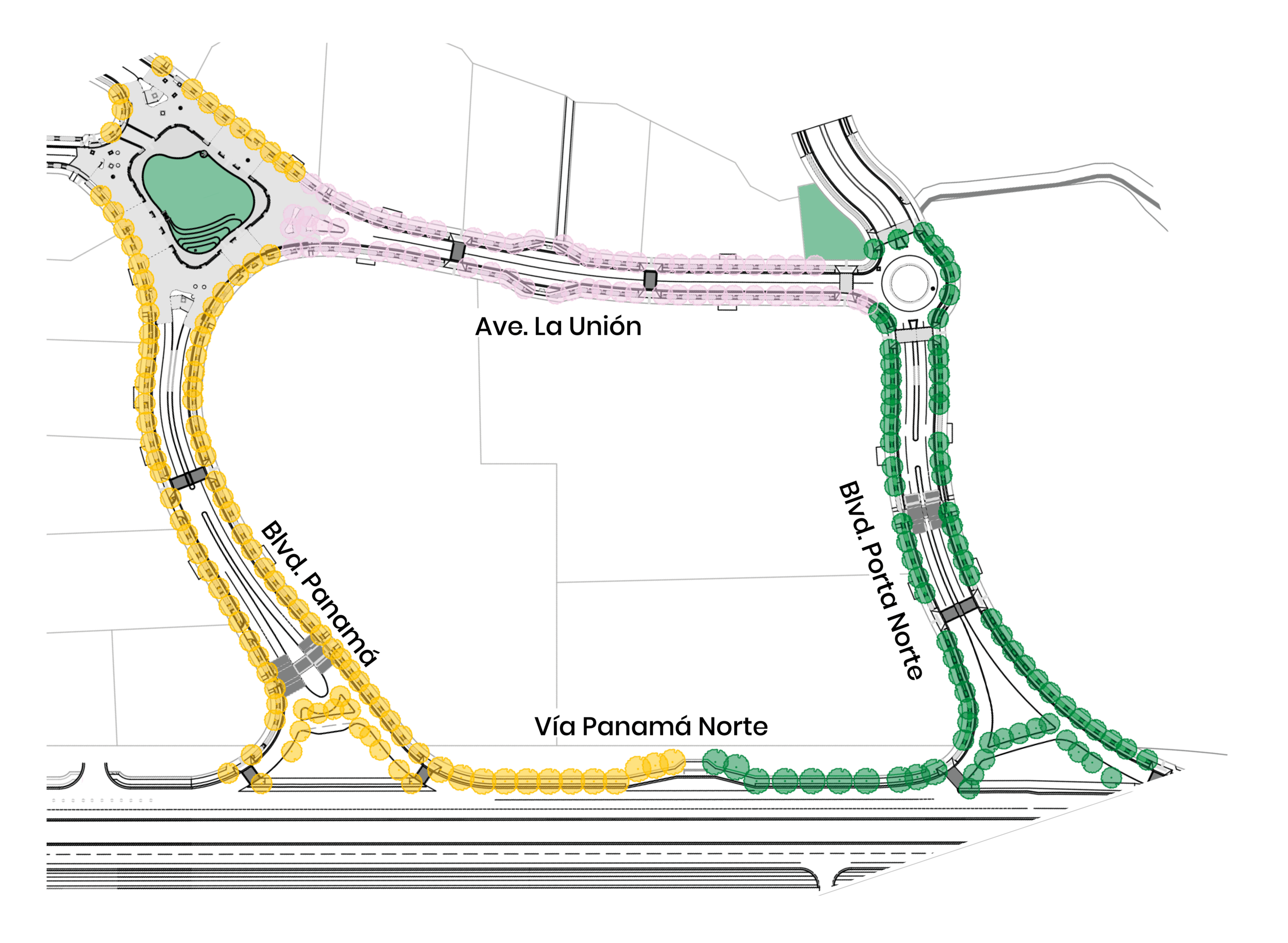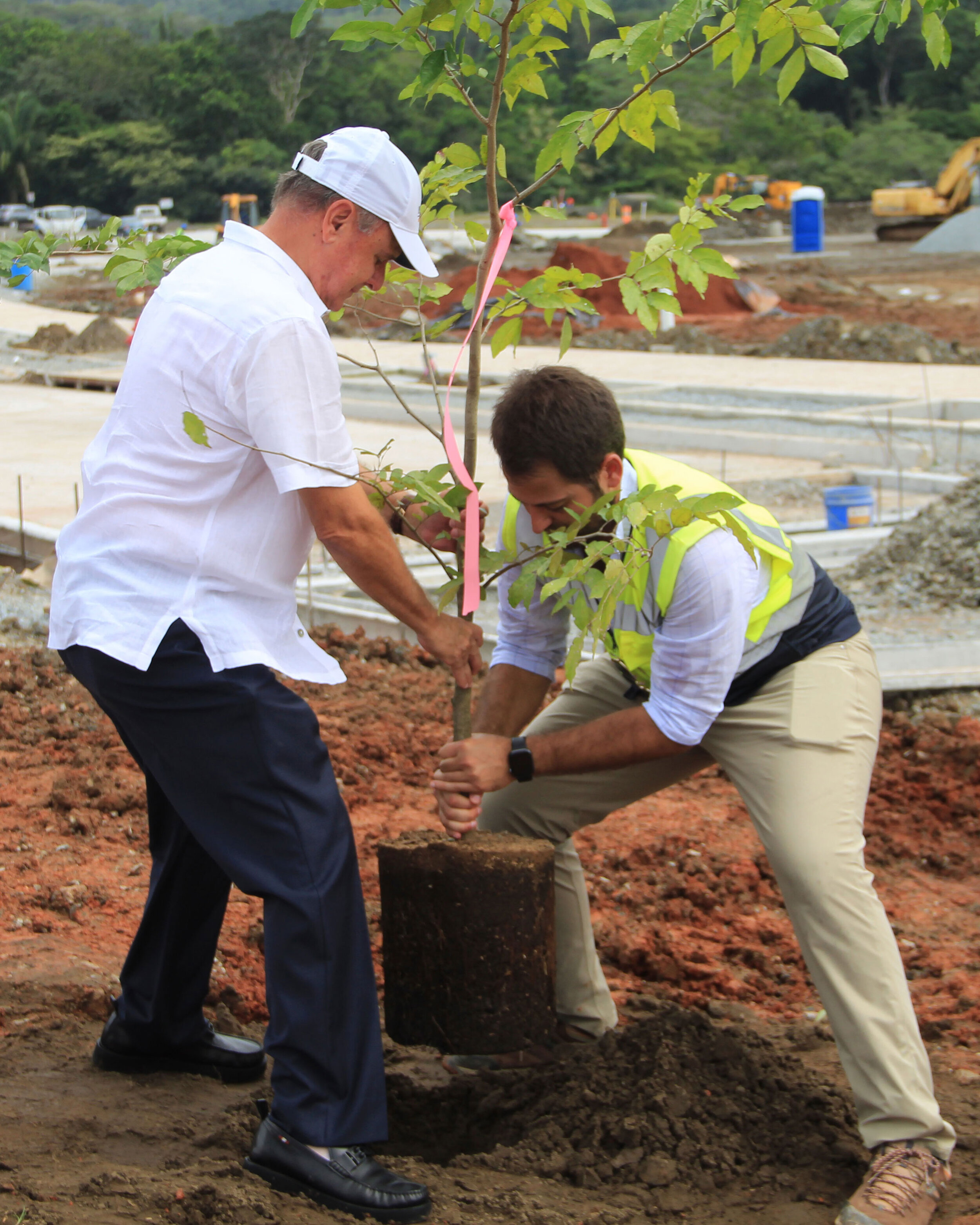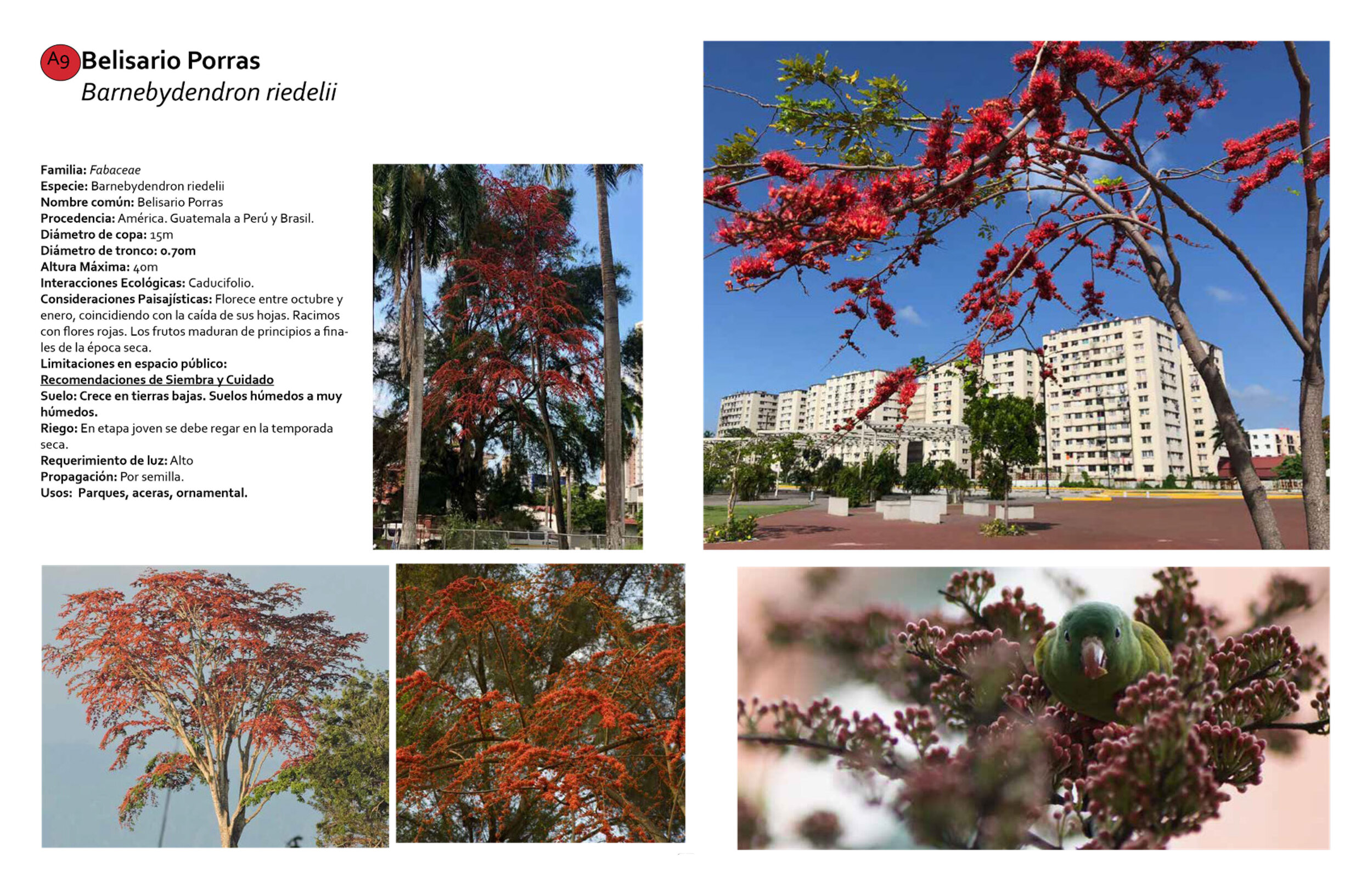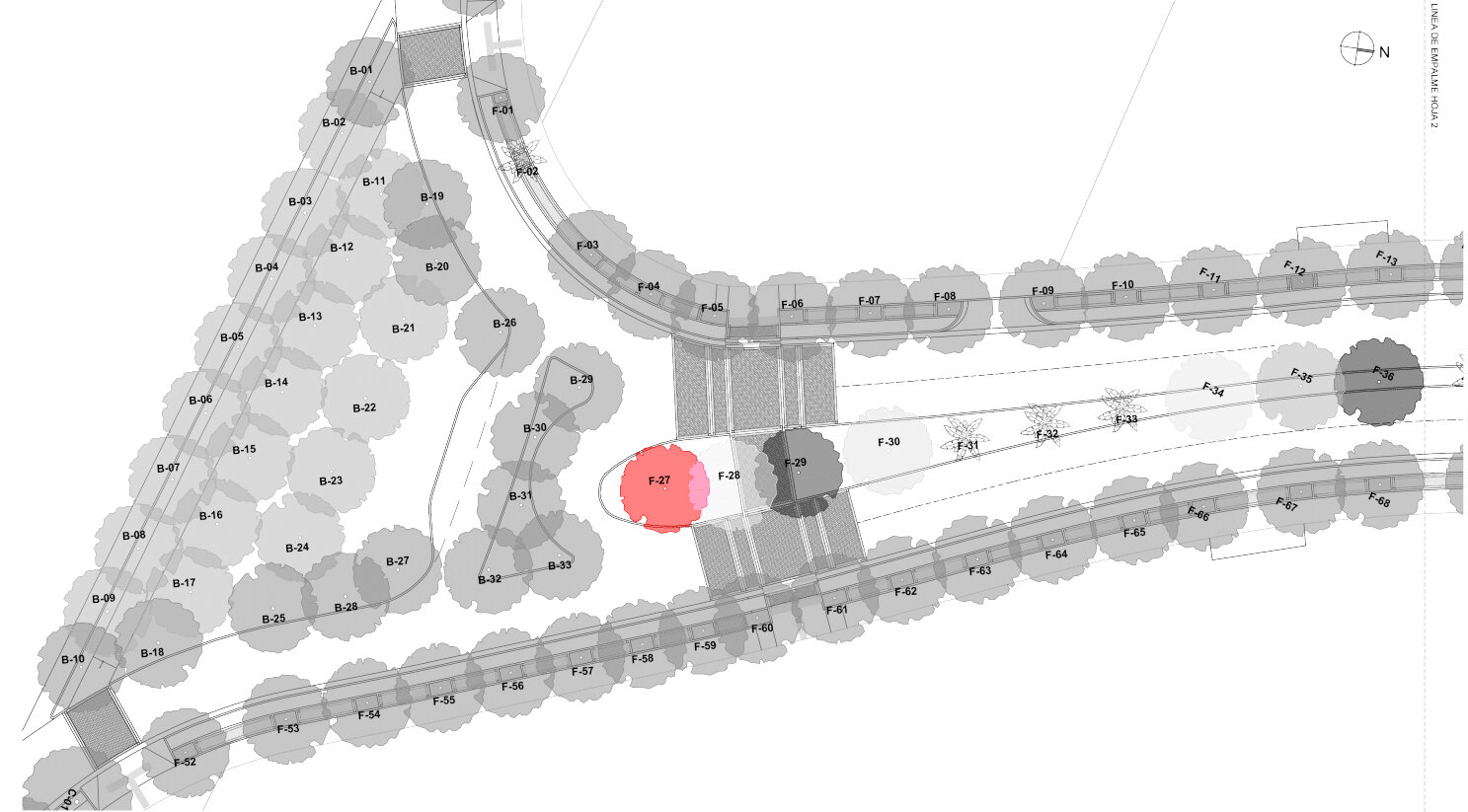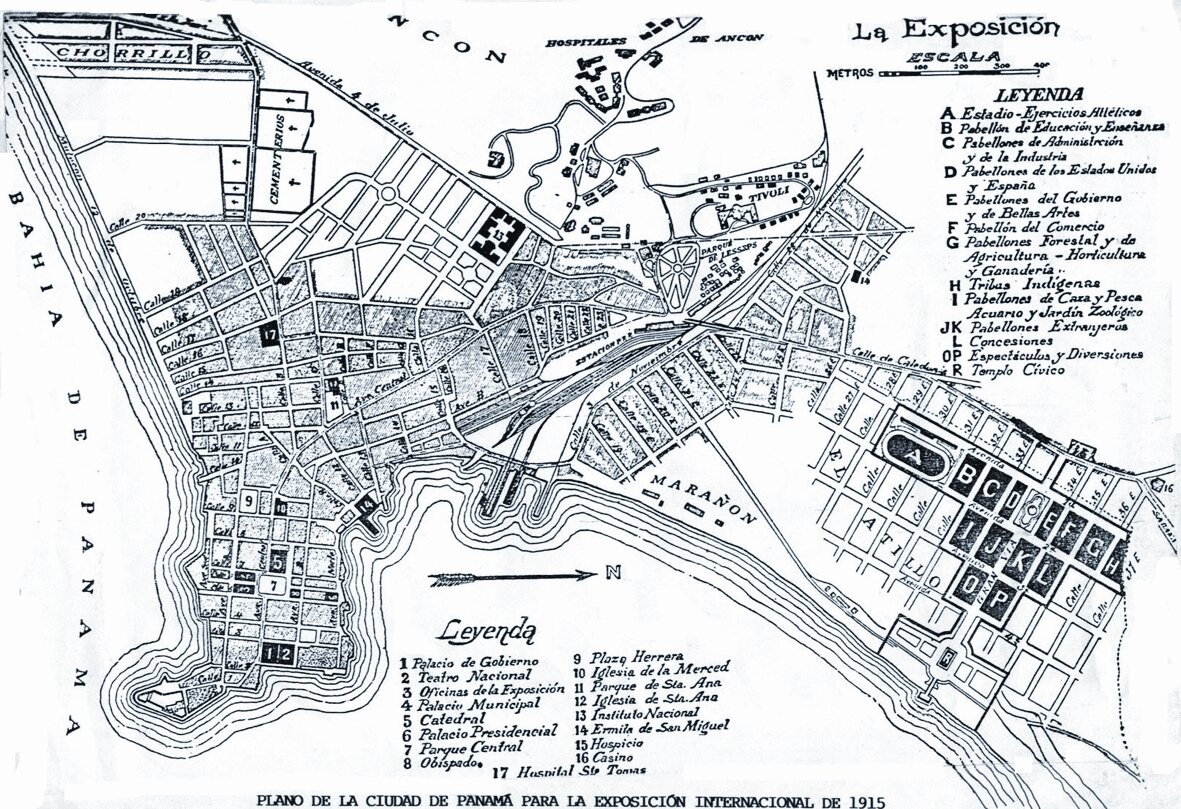The First Tree
At Porta Norte we are committed to the integration of walkable urbanism with nature. That's why we have pedestrian streets, trees on all pavements and connect urban planning with natural waterways.
Trees bring many benefits to a community. They generate positive psychological effects, increase biodiversity, provide shade for pedestrians and protect against vehicles.
Rendering of Porta Norte by DPZ
In 2015, Andrés Duany stressed the importance of having leafy trees. He taught me to choose trees in the shape of a martini glass or a capital i-cup (Y). In this way the tree canopy functions as a very tall umbrella. You can see this vision in the renderings DPZ made for the initial concept of Porta Norte.
To execute this vision we have had special considerations in the engineering designs. Water, sanitation, stormwater, telecommunications, gas and irrigation systems do not pass under the trees so that the roots can grow uninterrupted. We have even buried the electrical cables so that the tree canopies can grow huge.
Landscape architect Luis Alfaro designed the tree planting for the project. The most important principle of the design was to improve pedestrian comfort through shade. The trees are spaced about 7 metres apart so that the tree canopies intertwine to create a large green roof.
Street section of Boulevard Panama - Design by Arq. Luis Alfaro
Most of the species chosen are native. In this way we can find all the trees in Panama and increase the chances of survival when transplanting the trees. We are taking advantage of our great national biodiversity.
The first phase has more than 700 trees and 65 species. The reason for planting so many species is to learn which trees grow best. From this great variety we will reproduce the best ones in a nursery to plant them in later phases.
For the pavements we have chosen only evergreen trees - trees that do not drop their leaves. This ensures continuous shade all year round. We chose one tree on the pavements for each street, improving people's orientation.
Panama Boulevard: Golden Flame (yellow). Avenida La Unión: Sombreiro (pink). Boulevard Porta Norte: Lorito (green).
In the parks and medians we are planting colourful trees such as guayacanes (yellow), jacarandas (purple), Indian pride (purple), oak (pink) or belisario porras (red). Porta Norte will have a chromatic diversity - it will be full of colour at all times of the year.
In the design we included the tallest trees in Panama and almost all the fruit trees that grow in the country. We want to encourage the link with nature with the farm to table movement.
On Tuesday 21 September 2021 the team gathered at Porta Norte to commemorate this great milestone. Prior to the planting, a few words were shared as detailed below:
A word from Henry Faarup Humbert
First of all I would like to thank the shareholders, the executive committee, the staff, the Rojas Pardini family and my father, Henry Faarup Mauad, for having the openness and vision to make a development model focused on people and nature. We have worked hard and gone through a pandemic to reach this great milestone of planting the first tree.
An analogy a friend told me is that investing in trees is like investing in children's education. The benefits of investing in their education are felt in the medium and long term. It is the same with trees. We have to wait a few years for them to generate the shade that will be enjoyed in the medium and long term. To get better results in life we have to invest in the long term.
This first tree is called Belisario Porras (Barnebydendron Riedelii), the same species as the one in Plaza Herrera in Casco Viejo. This tree will have a wide canopy which will provide a lot of shade. It throws beautiful red flowers at Christmas time. The trees are being planted to create a cooler microclimate by preventing the sun from heating the concrete (avoiding heat islands) so that pedestrians can be more comfortable in Porta Norte's public spaces.
This tree also pays homage to former president Belisario Porras, who founded the Exhibition neighbourhood and recognised the importance of urban planning and architecture in Panama.
Recently I was showing a photo to our colleague Alfredo Motta of a very famous project just after the earthwork was done. It had newly planted trees. Today that project has a spectacular forest with trees up to 20 metres high. In that project, today, we can walk under an extensive green mesh created by the union between the canopy of the trees. What a great view!
There is a Chinese proverb that I constantly think about and would like to share with you:
"The best time to plant a tree is 20 years ago. The second best time is today.
Here we are today to plant the first tree of the project, at the beginning of a new urbanism.
The tree prayer:
Alfredo Motta, Executive Director of Porta Norte, did us the honour of offering a prayer in commemoration of the planting of Porta Norte's first tree:
Give us, Lord, the virtue of the trees:
the art of kindly shade and generous fruit,
of the branch that resists because it knows how to be flexible,
of the root that deepens in silence and without ostentation.Grant us the virtue of the trunk,
which knows that its firmness is a secret of years,
and grant that, at the end of each winter,
the gift of hope may nourish new buds.Give us hospitality to the four winds for every creature,
friendly or uncomfortable,
that approaches us.
And finally, allow us, when autumn arrives,
our leaves to fall without noise,
slowly and discreetly,
in the anonymous serenity of any sunset.Amen.
The first tree was then planted:
Henry Faarup Mauad and Henry Faarup Humbert planting the Belisario Porras tree.
Working team.
We hope that people who will be here in 20 years' time will think about the importance of leafy trees and value our initiative. We invite them to enjoy the shade these trees will generate, to plant more of their own and to get involved in the maintenance afterwards. Trees are living things that require everyone's care. We invite you to take branches or seeds and propagate the trees.
We reiterate our commitment to invest in walkable urbanism integrated with nature.
The tree:
The Belisario Porras (Barnebydendron Riedelii) grows up to 35 metres tall and flowers between October and January. It generates a crown diameter of up to 15 metres, which is frequently visited by squirrels, parakeets, iguanas, parrots and other beautiful birds.
Technical specifications prepared by Architect Luis Alfaro.
Belisario Porras tree in Plaza Herrera, Casco Viejo.
Location of the planted tree
Belisario Porras and La Exposición:
Dr. Belisario Porras was president of Panama on three occasions. In 1913 he decided to begin the construction of the urban development of the neighbourhood we know today as "La Exposición" to host the International Exposition, commemorating the 400th anniversary of the discovery of the South Sea.
This was the first planned urban development "on the periphery" of the city. At that time, the Casco Viejo was the centre. La Exposición has perfect blocks with beautiful colonial buildings, squares and trees.
The neighbourhood of "La Exposición" on the right. The Old Town on the left.
The neighbourhood of "La Exposición" has been absorbed by Panama City but still retains its urbanistic and architectural qualities. The parallel with Porta Norte is very evident: A planned development on the periphery with traditional architecture and lots of public spaces that will be absorbed by the city. In honour of this planned urban development and the president who took the initiative to organise the city, we have chosen the Belisario Porras tree to be the first tree.


